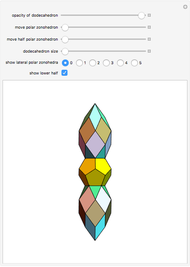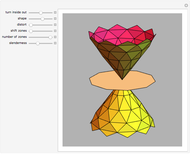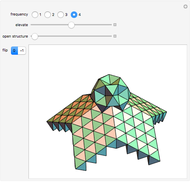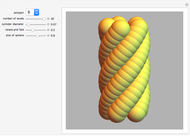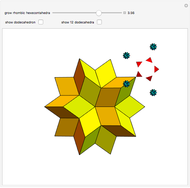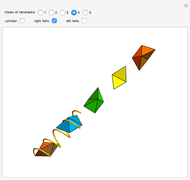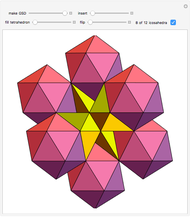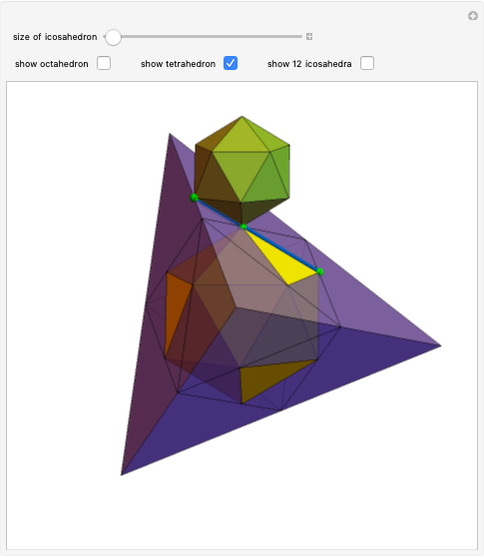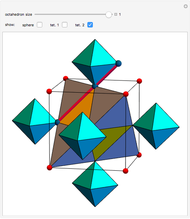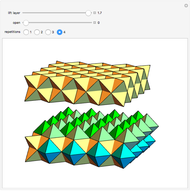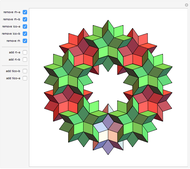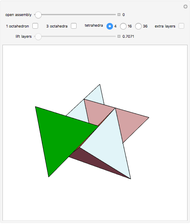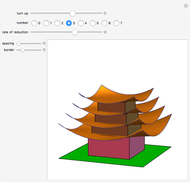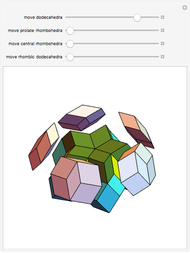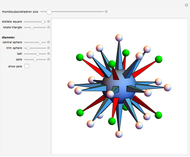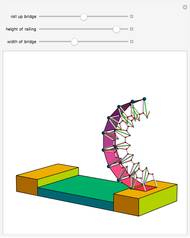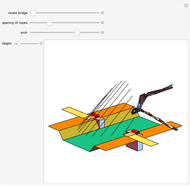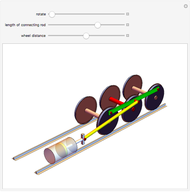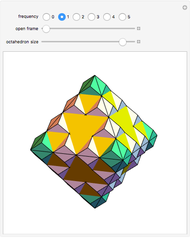Shaping of Polar Zonohedron

Requires a Wolfram Notebook System
Interact on desktop, mobile and cloud with the free Wolfram Player or other Wolfram Language products.
Each rhomb of a polar zonohedron is divided into two triangles. Then the zonohedron is shaped by changing the vertical coordinates of the vertices of the triangles according to selected portions of a sine wave. This means that the poles of the polar zonohedron are moved symmetrically or asymmetrically to produce various shapes, such as a raindrop, heart, bullet, barrel, ellipsoid, or submarine. This allows an efficient way to explore shapes in industrial design, architecture, or space station design, as well as to conduct comparative analysis of naturally occurring objects. All levels have equal height in any particular setting. This property makes the shaped zonohedron especially suitable for architecture.
Contributed by: Sándor Kabai (April 2007)
Open content licensed under CC BY-NC-SA
Snapshots
Details
detailSectionParagraphPermanent Citation
"Shaping of Polar Zonohedron"
http://demonstrations.wolfram.com/ShapingOfPolarZonohedron/
Wolfram Demonstrations Project
Published: April 27 2007






